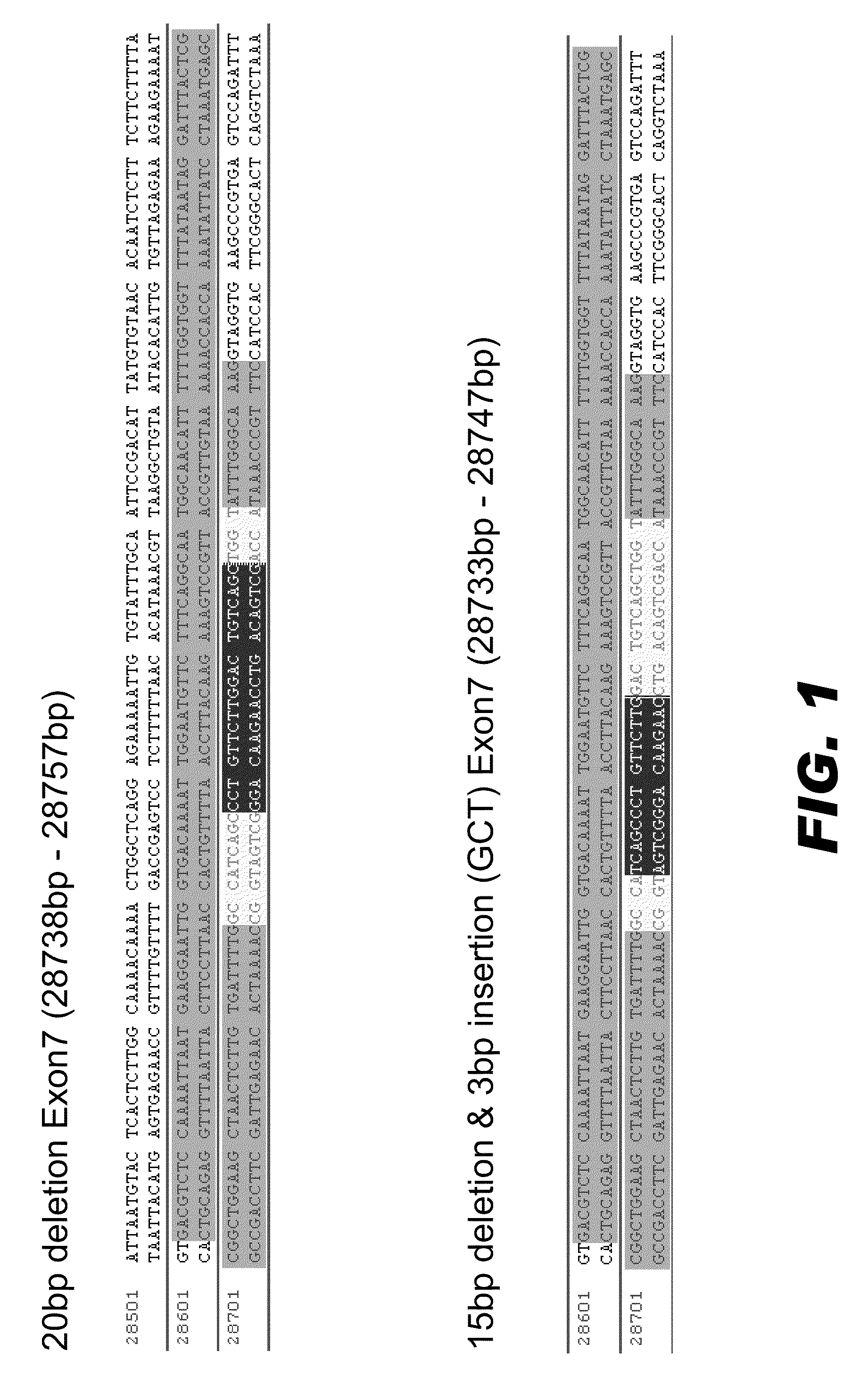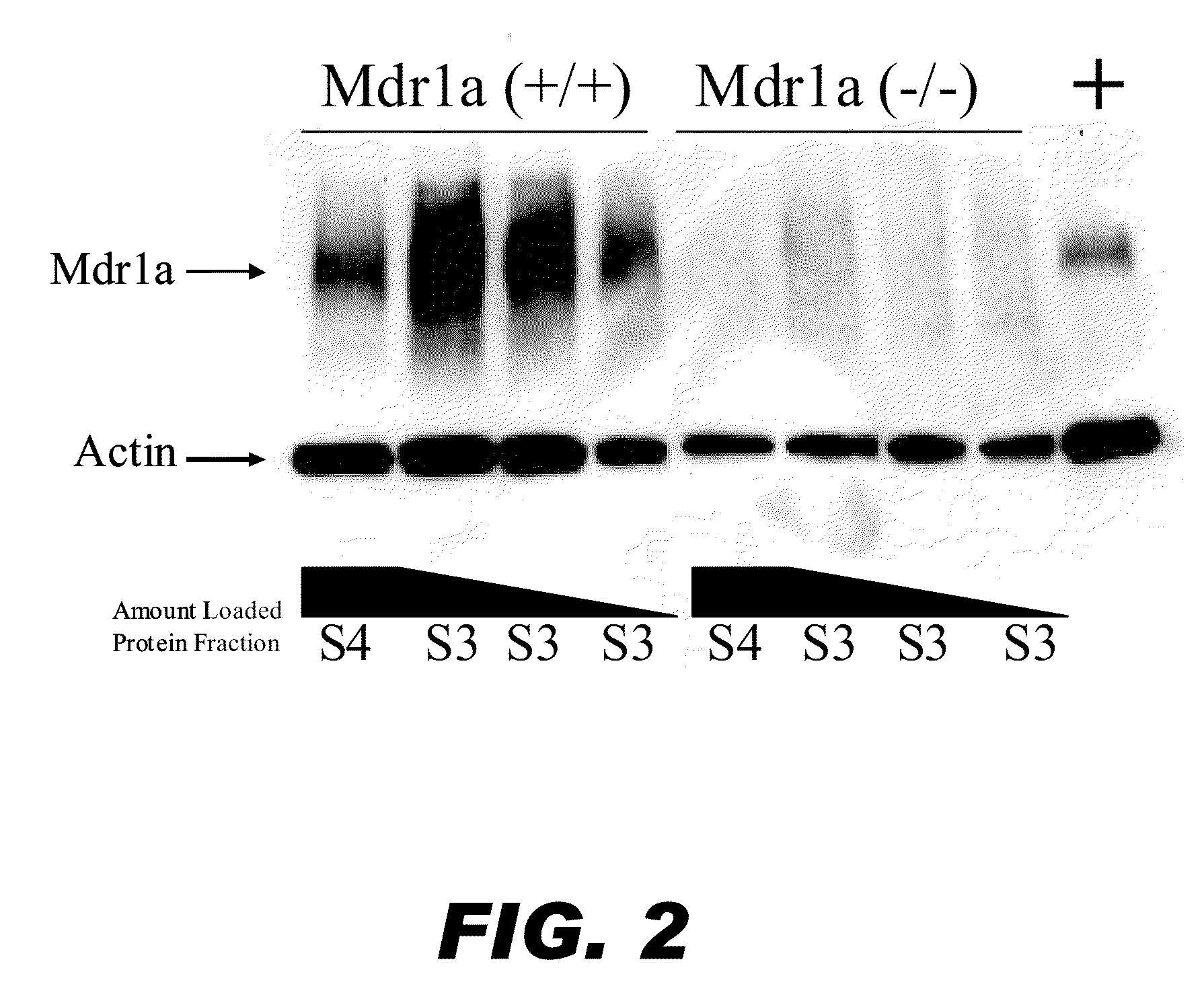Genome editing of abc transporters
a technology of abc transporters and gene editing, applied in the field of gene editing of abc transporters, can solve the problems of hampered research progress into the causes and treatments of disorders implicating abc transporters, and the need for gene knockout technology to construct and validate the proper knockout model,
- Summary
- Abstract
- Description
- Claims
- Application Information
AI Technical Summary
Benefits of technology
Problems solved by technology
Method used
Image
Examples
example 1
Identification of ZFNs that Edit the Mdr1a Locus
[0136]The Mdr1a gene was chosen for zinc finger nuclease (ZFN) mediated genome editing. ZFNs were designed, assembled, and validated using strategies and procedures previously described (see Geurts et al., Science (2009) 325:433). ZFN design made use of an archive of pre-validated 1-finger and 2-finger modules. The rat Mdr1a gene region (NM—133401) was scanned for putative zinc finger binding sites to which existing modules could be fused to generate a pair of 4-, 5-, or 6-finger proteins that would bind a 12-18 bp sequence on one strand and a 12-18 bp sequence on the other strand, with about 5-6 bp between the two binding sites.
[0137]Capped, polyadenylated mRNA encoding each pair of ZFNs was produced using known molecular biology techniques. The mRNA was transfected into rat cells. Control cells were injected with mRNA encoding GFP. Active ZFN pairs were identified by detecting ZFN-induced double strand chromosomal breaks using the Ce...
example 2
Editing the Mdr1a Locus
[0138]Capped, polyadenylated mRNA encoding the active pair of ZFNs was microinjected into fertilized rat embryos using standard procedures (e.g., see Geurts et al. (2009) supra). The injected embryos were either incubated in vitro, or transferred to pseudopregnant female rats to be carried to parturition. The resulting embryos / fetus, or the toe / tail clip of live born animals were harvested for DNA extraction and analysis. DNA was isolated using standard procedures. The targeted region of the Mdr1a locus was PCR amplified using appropriate primers. The amplified DNA was subcloned into a suitable vector and sequenced using standard methods. FIG. 1 presents DNA sequences of edited Mdr1a loci in two animals. One animal had a 20 bp deletion in the target sequence in exon 7, and a second animal had a 15 bp deletion and a 3 bp insertion in the target sequence of exon 7. The edited loci harbored frameshift mutations and multiple translational stop codons.
[0139]Western...
example 3
Identification of ZFNs that Edit the Mdr1b Locus
[0140]ZFNs that target and cleave the Mdr1b gene were identified essentially as described above. The rat Mdr1b gene (NM—012623) was scanned for putative zinc finger binding sites. ZFNs were assembled and tested essentially as described in Example 1. This assay revealed that the ZFN pair targeted to bind 5′-agGAGGGGAAGCAGGGTtccgtggatga-3′ (SEQ ID NO: 10; contact sites in uppercase) and 5′-atGCTGGTGTTCGGatacatgacagata-3′ (SEQ ID NO: 11) cleaved within the Mdr1b locus.
PUM
| Property | Measurement | Unit |
|---|---|---|
| pH | aaaaa | aaaaa |
| pH | aaaaa | aaaaa |
| tumor resistance | aaaaa | aaaaa |
Abstract
Description
Claims
Application Information
 Login to View More
Login to View More - R&D
- Intellectual Property
- Life Sciences
- Materials
- Tech Scout
- Unparalleled Data Quality
- Higher Quality Content
- 60% Fewer Hallucinations
Browse by: Latest US Patents, China's latest patents, Technical Efficacy Thesaurus, Application Domain, Technology Topic, Popular Technical Reports.
© 2025 PatSnap. All rights reserved.Legal|Privacy policy|Modern Slavery Act Transparency Statement|Sitemap|About US| Contact US: help@patsnap.com



